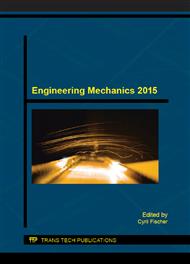p.725
p.733
p.741
p.747
p.753
p.761
p.767
p.774
p.782
Long-Term Trends in Annual Ground Snow Maxima for the Carpathian Region
Abstract:
The current structural design provisions are prevalently based on experience and on the assumption of stationary meteorological conditions. However, the observations of past decades and advanced climate models show that this assumption is debatable. Therefore, this paper examines the historical long-term trends in ground snow load maxima, and their effect on structural reliability. For this purpose, the Carpathian region is selected, and data from a joint research effort of nine countries of the region are used. Annual maxima snow water equivalents are taken, and univariate generalized extreme value distribution is adopted as a probabilistic model. Stationary and five non-stationary distributions are fitted to the observations utilizing the maximum likelihood method. Statistical and information theory based approaches are used to compare the models and to identify trends. Additionally, reliability analyses are performed on a simple structure to explore the practical significance of the trends. The calculations show decreasing trends in annual maxima for most of the region. Although statistically significant changes are detected at many locations, the practical significance - with respect to structural reliability - is considerable only for a few, and the effect is favourable. The results indicate that contrary to the widespread practice in extreme event modelling, the exclusive use of statistical techniques on the analysed extremes is insufficient to identify practically significant trends. This should be demonstrated using practically relevant examples, e.g. reliability of structures.
Info:
Periodical:
Pages:
753-760
Citation:
Online since:
January 2016
Authors:
Price:
Сopyright:
© 2016 Trans Tech Publications Ltd. All Rights Reserved
Share:
Citation:


